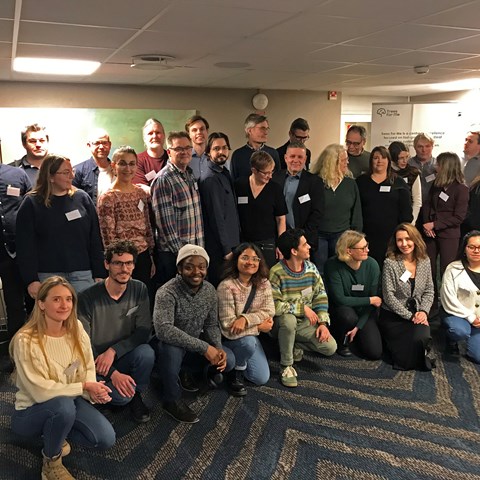Facts:
What is a centre of excellence?
A centre of excellence is a team, a shared facility or an entity that provides leadership, best practices, research, support or training for a focus area.

Many agree that the large proportion of spruce and pine in Swedish forestry needs to be complemented with more broadleaf trees, to make the forests more resilient to climate change effects, diseases and pests. The centre of excellence Trees For Me gathered its PhD students, researchers and executive board to discuss how to excel in the activities for fast-growing broadleaf forestry, materials and energy.
“The dependence on two tree species, Norway spruce and Scots pine, jeopardize the sustainability of future forest production in Sweden. More alternatives are needed and fast-growing broadleaves will be one important addition to current forest management models”, says Urban Nilsson, professor of silviculture and director of Trees For Me.
Adding more broadleaves and biodiversity in silviculture practice can provide for a more robust and resilient system, where the provisioning of ecosystem services including recreation and tourism, reindeer herding, the availability of non-timber forest products, for example berries and mushrooms, can be maintained.
Many of the participants at the PhD meeting highlighted that more or less all societal stakeholders already agree on the need for more diversity and more broadleaves in Swedish forests. The interest in the broadleaved species is there, but what’s lacking are financial incentives and an effective value chain. There’s also a lack of seedlings and the supply must be secured in order for the use to increase. Many of these challenges will be addressed in Trees For Me’s research.
“I see great potential in Trees For Me - this centre is the hub to which you will turn for knowledge. The interest in primarily fast-growing birch as a third major production tree species is great, but there are still knowledge gaps to be filled and development work to be done to get a reliable system in all parts from tree breeding and seed production to issues related to damage, the market, biodiversity and social values”, says Gisela Björse, director of silviculture at Sveaskog and executive board member of the centre, who also highlights the less common tree species as being interesting from a climate and diversity perspective.
How to achieve excellent results in a modern research organization was one of the questions raised at the first physical meeting focused on the Trees For Me Phd students and their research projects.
“Trees For Me is more than just 15 research projects. Students and researchers in Trees For Me will become future leaders and the competence among our stakeholders will grow while the use of fast-growing broadleaf trees will increase considerably”, Urban Nilsson predicts.
Being a centre of excellence adds an international quality stamp to the activities.
”Linking the different kinds of strengths and expertise as we do in the centre will lead to outcomes and impacts that are much greater than one could anticipate without, and this cross-disciplinary collaboration can accelerate our ability to break new ground and produce leading-edge knowledge and competency in sustainable forestry and bioenergy. This is considered a real advancement and benefit for the sector and society as a whole”, says associate professor of forest pathology and Trees For Me’s vice director Michelle Cleary.
Research programmes are often time-bound, by financing and other circumstances, but Trees For Me’s ambitions are long-term. The chairman of the Trees For Me executive board, as well as the dean of the SLU Faculty of Forest Sciences and professor of wildlife ecology, Göran Ericsson, highlighted the question on how the centre will stay relevant over time.
“A key challenge is to handle the expectations that come with a programme of this width and breath in its early phase. Trees For Me handles this by being a broad consortium that involves all relevant actors. That ensures that results will be acknowledged as soon as they are known and thus will come to use”, Göran Ericsson concluded.
A centre of excellence is a team, a shared facility or an entity that provides leadership, best practices, research, support or training for a focus area.